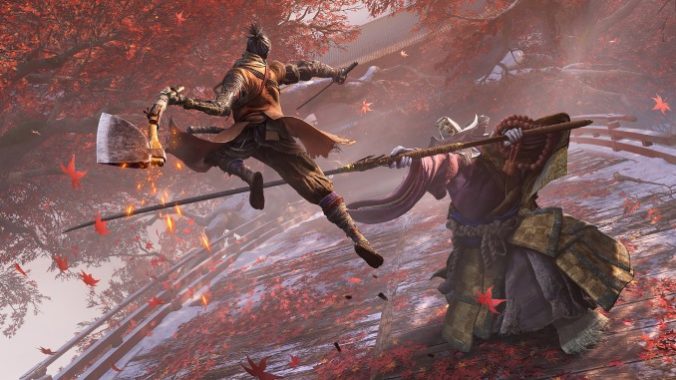Breaking Up With Sekiro: Shadows Die Twice

Forgive me: I’ve come to write a confessional personal essay about videogames helping me through difficulties in my real life. This December I found myself exhausted from just about every direction. I had gone through a devastating break up a few months prior that still felt fresh and pulsing, the holidays had arrived with all the stress and loneliness they usually carry, and my immediate family were all acting unusually insane. There is a base level of familial antics I expect, but it felt like everyone had decided it was no longer good enough and they simply had to turn things up. Closets were opened, skeletons spilled out. I did my best to support them where I could, but I returned home to my apartment after the holidays feeling defeated and empty. My resolve had wavered. I simply did not think I had much left to offer anyone. Then, dear reader, came Hidetaka Miyazaki’s Sekiro: Shadows Die Twice.
I’ve never been much of a Souls head. There was a time when the bulk of my experience was achieved at my dear friend Kevin’s house where we created “Colin Mockery” in Dark Souls 3. Colin was a bald, nude, and sickly looking man with only a vague resemblance to the semi-famous comedian with a similar name. He was not allowed to wear armor. We spent hours seeing how far he could go only to eventually abandon him. I would go on to play Elden Ring to completion, which I enjoyed very much, but I still considered myself a tourist in the worlds of Miyazaki’s franchise. I also didn’t necessarily think I wanted to change that. The games seemed unforgiving, cold, and ugly, which can be engaging but is not always what I want from videogames. “Getting good” didn’t appeal to me. The challenge didn’t appeal to me. Of course, I was a fool. I had no idea what Sekiro would do to me, what it could inspire within me.
I downloaded it on a whim when I realized it was half off on the PlayStation store and after some meager early successes I began dying far more than twice. As enemies became increasingly difficult my absolute lack of skill and precision was revealed to me. I didn’t understand what to do or how I was possibly going to defeat a boss who was making such short work of me. Overwhelmed, out of my depth, dying time and time again to Lady Butterfly, I reflected on my own situation as a player of a game rather than as a character in one. Losing battles were everywhere in my life. I was scrambling to try to find solutions that were not coming. I was flailing, I was lacking grace, which was when Sekiro taught me its first lesson: There would be no simple solutions. I was just going to need to figure this out. It may seem trite and obvious, but this was a time of so much stumbling and failure. The mantra “take a breath, try again,” became a guiding force as I continued on. I had to make a plan, I had to approach with caution, and most importantly I had to understand.